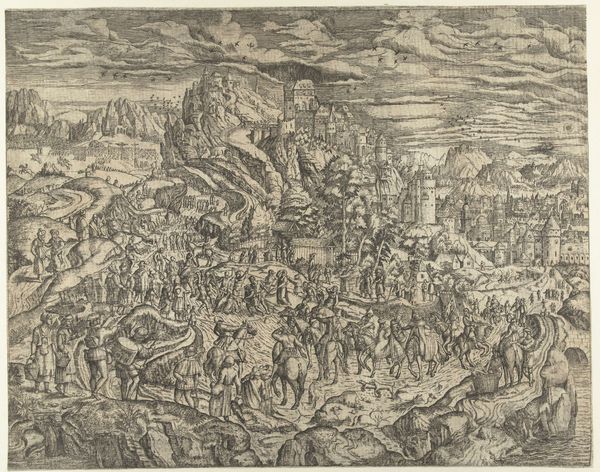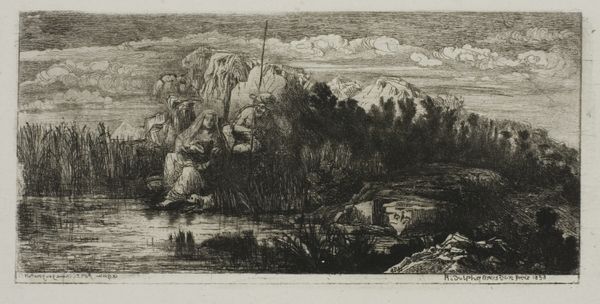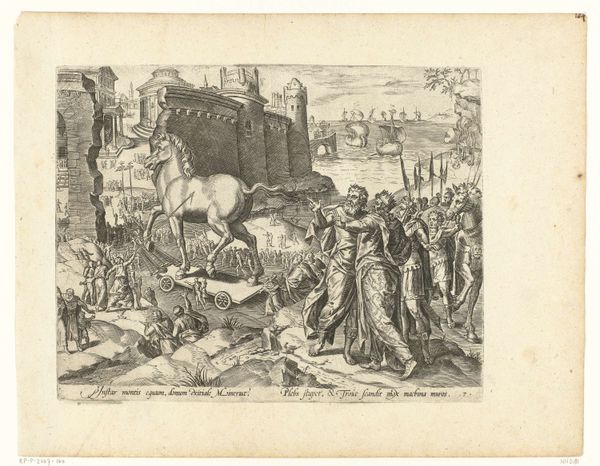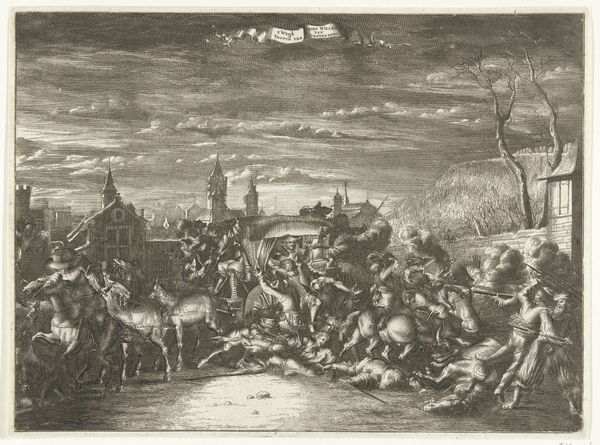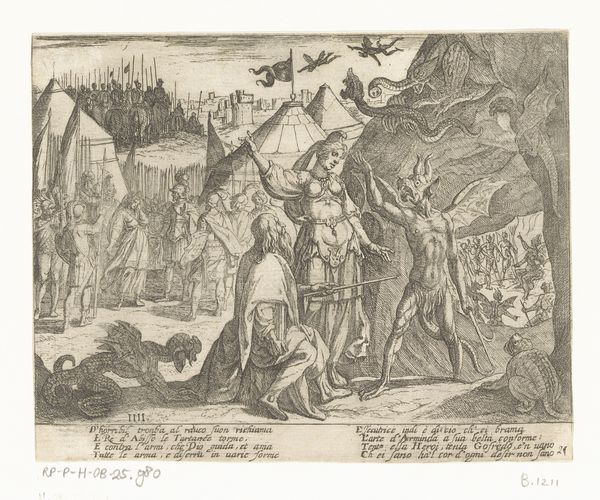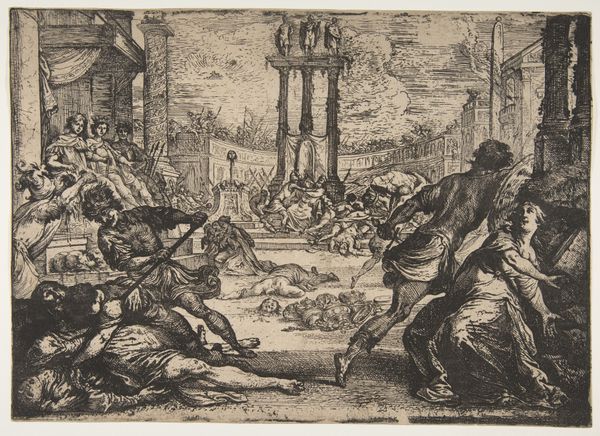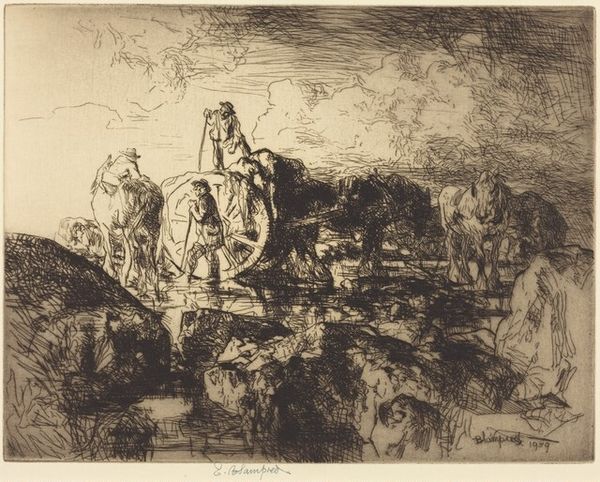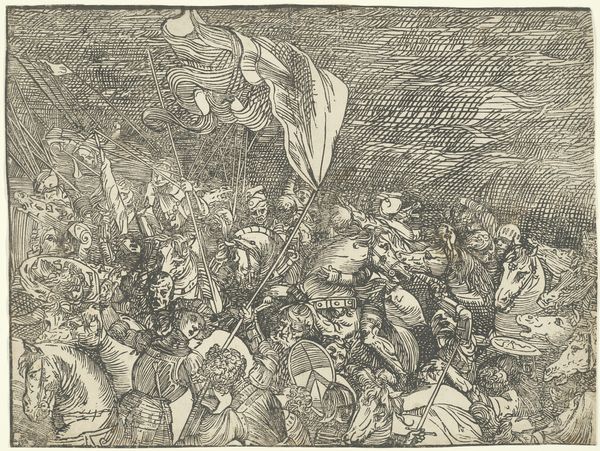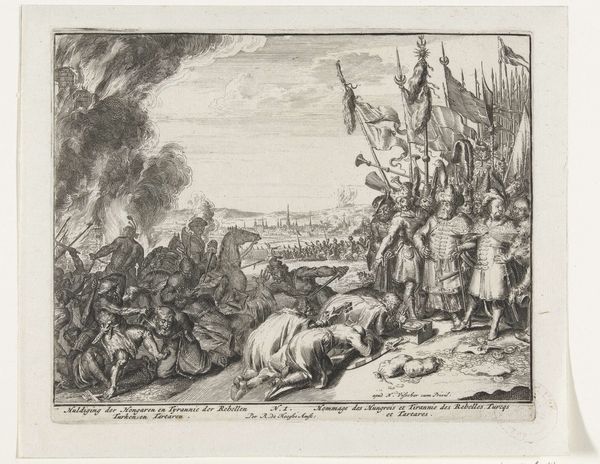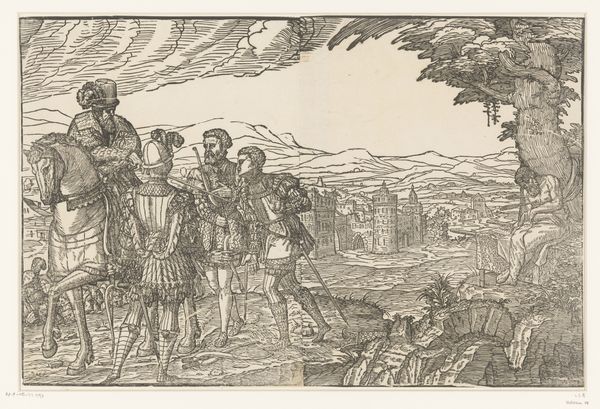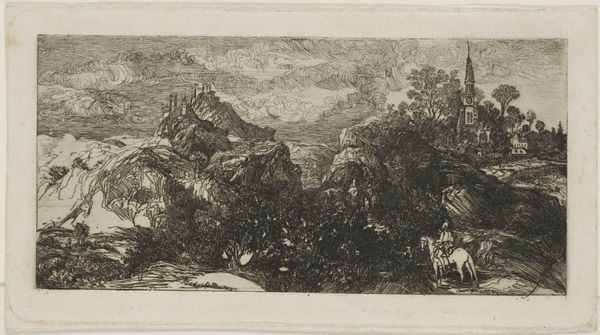
drawing, etching
#
drawing
#
ink drawing
#
baroque
#
pen drawing
#
etching
#
landscape
#
cityscape
#
italian-renaissance
Dimensions: height 101 mm, width 141 mm
Copyright: Rijks Museum: Open Domain
Editor: So, here we have Breenbergh's "Italian Landscape with Buildings and a Bridge," created in 1639 using etching. It's incredibly detailed; the buildings almost feel secondary to the textures of the rocks. How would you approach understanding this piece? Curator: Focusing on the process is key. Etching, a printmaking technique, suggests accessibility and dissemination. Consider the socio-economic implications: how does the material, the relative ease of production, and the landscape genre itself relate to the patronage system and the consumption of imagery in 17th-century Europe? What labor went into it? Editor: That's interesting. I hadn't thought about it that way. I was mostly looking at the, uh, 'picturesque' qualities, the light, the... Italian-ness of it all. Curator: But the 'Italian-ness' is a constructed idea, right? Ask yourself, what materials did Breenbergh use to *create* that illusion of Italy? How does the repeatable nature of etching democratize, or perhaps commodify, the experience of the Grand Tour? Think about the availability of paper, ink, the skills needed…it all informs how this landscape functions culturally. Editor: So, less about *what* is depicted, and more about *how* it was made, and how that making situates it within its time. Curator: Precisely. Consider how the relative ease of etching compared to, say, oil painting, impacts the volume and reach of landscape imagery. The materiality shapes the message. Editor: That definitely reframes my thinking on it. I was stuck on aesthetic qualities but neglected the physical reality of its production and circulation. Thank you. Curator: Absolutely. Examining the physical components offers invaluable insights.
Comments
No comments
Be the first to comment and join the conversation on the ultimate creative platform.
